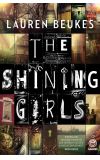
02 May 2013 02:27:08
Lauren Beukes's previous novel, the Arthur C Clarke award-winning Zoo City, was an urban fantasy with shades of detective fiction: a grittier version of His Dark Materials recast in South Africa. In her new book, a man named Harper Curtis living in depression-era Chicago comes upon a house – or House, as it is capitalised in the novel – that is a portal to other times. Inside there's a dead man on the floor, and on the walls a constellation of unrelated artefacts, among them a pair of butterfly wings, a baseball card and a contraceptive pill. Next to these objects are the names of women, scrawled in Harper's own handwriting. When he looks out of the window the world beyond seems to be in a time-lapse film: "The houses across the way change. The paint strips away, recolours itself, strips away again through snow and sun and trash tangled up with leaves blowing down the street." We know Harper isn't much troubled by conscience because he throttled a blind woman to get the key to the House in the first place, and once inside he is quickly overcome with the urge to kill the "shining girls" signified by the names and keepsakes. His motives are mysterious. There are hints of the bliss-in-murder mysticism found in Alan Moore's graphic novel From Hell, but for the most part his reasons don't go any further than a penchant for cruelty, worked up by the inexplicable forces of the House.
And so he moves between 1929 and 1993, slaying his predetermined victims as he goes and leaving anachronistic items with the bodies. For an extra kick he enjoys masturbating over the scenes of his crimes, decades before or after he commits them: "He likes the juxtaposition of memory and change. It makes the experience sharper."
Not all his attacks are successful. Kirby, a young woman living in 1989, survives one of his assaults and vows to find her would-be killer. She becomes an intern at the Chicago Sun-Times newspaper to get her hands on evidence of a possible link between her ordeal and a series of other murders, befriending a lovesick old hack to help her with her quest. Meanwhile Harper is looping the loop through time, hoping to bump into Kirby again so he can finish the job.
Beukes has enormous fun with the concept. When Harper travels to 1988 he "stands entranced by the whirling and flaying brush strips of a car wash". He visits the Sears Tower under construction in 1972, and then returns a year later – or a day later, in his time – to take the elevator to the top. "The view makes him feel like a god."
Yet it is 1930s Chicago that is the most pungent and evocative era in the novel. Beukes's writing is at its most surprising here, recalling the cadences of Denis Johnson: when Harper surveys the sorry patients of a run-down hospital, they are described as having "the same look of resignation he's seen in farm horses on their last legs, ribs as pronounced as the cracks and furrows in the dead earth they strain the plow against. You shoot a horse like that."
Beukes's craft has improved in other ways, too. As with the heroines of Zoo City and Moxyland, Kirby is barbed and sarcastic, but she's less likely to reduce everything to a quip. The problem is that the killing is so brutal and pitiless that it threatens to overwhelm the rest of the novel. In a way it's commendable that Beukes hasn't softened the violence, but it doesn't sit well with the tricksy, jigsaw quality of the story. This is an entertaining novel that will be read with keen attention, but the reader may end up slightly confused by the meaning of it all.

